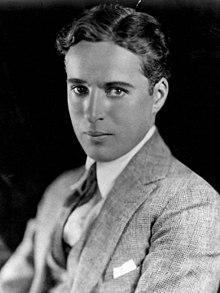 Born to a family of unsuccessful entertainers in London, Charles Spencer Chaplin would find the urge to perform early on in his life. As soon as he was old enough, Chaplin travelled the world on the vaudeville circuit and was hailed as one of the best young pantomime comedians around. At the turn of the century he joined Fred Karno's troupe of young comedians and ventured to North America for the first time. Only a few months into the American tour the young Charlie Chaplin got the opportunity which would change his life as he was given a contract with the famed studio of the silent era Keystone. In 1914 he introduced audiences to his character "the Little Tramp" or "the Tramp". Sloppily dressed in a tattered suit with a small mustache and bowler hat, Chaplin's character would forever become engrained in film history. Even today those who have never seen of his films instantly recognize this character. His creativity knew no bounds and eventually he and his friends; DW Griffith, Mary Pickford, and Douglas Fairbanks founded the studio United Artists. Despite his success over the years the 1940's hit the comedian hard. FBI Director J Edgar Hoover saw Chaplin as a threat due to his political beliefs and led a campaign against him. This combined with his fading popularity and personal demons led to him being exiled from the country he had come to love. He did not return to the United States until 1972 when he was given a special recognition by the Academy Awards and received a 12 minute standing ovation the longest in the show's history. Because of his undeniable impact on motion pictures during the medium's pioneering era creating a legacy which lasts even still, today we shine the Spotlight On Charlie Chaplin.
Born to a family of unsuccessful entertainers in London, Charles Spencer Chaplin would find the urge to perform early on in his life. As soon as he was old enough, Chaplin travelled the world on the vaudeville circuit and was hailed as one of the best young pantomime comedians around. At the turn of the century he joined Fred Karno's troupe of young comedians and ventured to North America for the first time. Only a few months into the American tour the young Charlie Chaplin got the opportunity which would change his life as he was given a contract with the famed studio of the silent era Keystone. In 1914 he introduced audiences to his character "the Little Tramp" or "the Tramp". Sloppily dressed in a tattered suit with a small mustache and bowler hat, Chaplin's character would forever become engrained in film history. Even today those who have never seen of his films instantly recognize this character. His creativity knew no bounds and eventually he and his friends; DW Griffith, Mary Pickford, and Douglas Fairbanks founded the studio United Artists. Despite his success over the years the 1940's hit the comedian hard. FBI Director J Edgar Hoover saw Chaplin as a threat due to his political beliefs and led a campaign against him. This combined with his fading popularity and personal demons led to him being exiled from the country he had come to love. He did not return to the United States until 1972 when he was given a special recognition by the Academy Awards and received a 12 minute standing ovation the longest in the show's history. Because of his undeniable impact on motion pictures during the medium's pioneering era creating a legacy which lasts even still, today we shine the Spotlight On Charlie Chaplin.
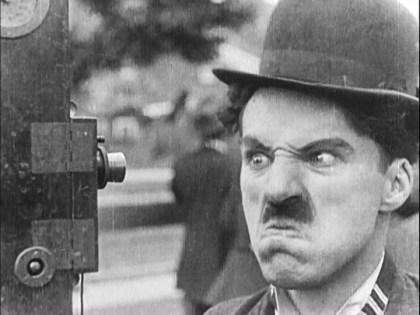
Kid Auto Races at Venice: This was the short which first introduced moviegoers to the Tramp. Filmed during the Junior Vanderbilt Cup in Venice, California the Tramp is a spectator for the festivities but he keeps interrupting the proceedings. Largely ad-libbed by Chaplin and director Henry Lehrman, the Tramp bumble around getting in the way of other spectators and being an overall nuisance by obstructing their views and irritating the cameraman at working filming the race. At one point this film even breaks the fourth wall and becomes one of the first time audiences were shown a movie camera with a person operating it.
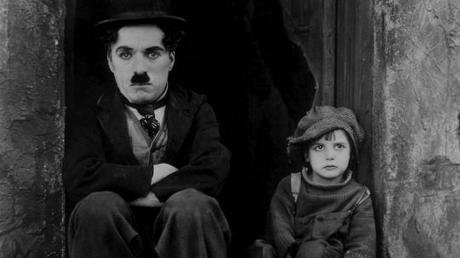
The Kid: A large number of shorts had made Chaplin's Tramp into a favorite among moviegoers and in 1921, the character was finally given his first feature. Written and directed by Charlie Chaplin himself, the movie sees the Tramp end up the guardian of an abandoned infant. Though initially reluctant to take on this role, he takes a liking to the child he names John (played by Jackie Coogan ) and raises up to be his accomplice in crime. During this time the boy's mother has gained a great deal of wealth and wants her child back. Though he initially tries to go on the run with John, it proves pointless and eventually the kid is returned to his mother. Though in a nice twist the mother comes to her sense and allows the Tramp to join her in raising the child. The title card to start the film famously reads "A picture with a smile_and perhaps a tear" and truly lives up to this as it brings the laughs but also tugs hard on the heartstrings.
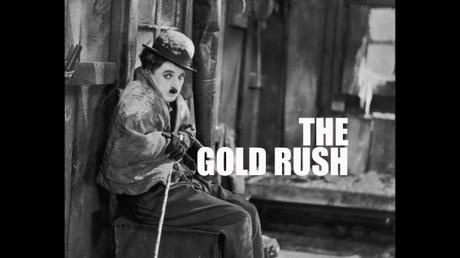
The Gold Rush: Chaplin took his Little Tramp north, to join in with the Klondike Gold Rush to horribly hilarious results. The Tramp's quest for riches have not gone as planned as he is isolated in a cabin with the burly Big Jim while feasting on boiled boot. Luckily for us in the audience Max Swain who portrays Big Jim is the perfect foil for Chaplin to bounce off of. While in this arctic wasteland he falls hard for a woman named Georgia, but he does have competition for her. The Gold Rush is a film that Chaplin himself was quite fond of and of all the masterpiece films he made this was the one he hoped to be remembered for. If nothing else the Gold Rush has gone down in comedy history for the "roll dance" where Chaplin stuck forks into his bread rolls and swings them around. This joke has been parodied and homage countless times but the original still stands the test of time.

City Lights: In this 1931 masterpiece the Tramp finds love in the big city in the form of a visually impaired woman who sells flowers. Thanks to befriending a millionaire who was in an inebriated and suicidal state, the Tramp is able to trick her into thinking he is wealthy instantly impressing her with his kindness. When the young woman learns of an operations which can return her eyesight, the smitten Tramp vows to pay for it despite the fact he works as a street sweeper. At the same time he is terrified because if the surgery is successful she will see that he is not the wealthy and handsome man she believes him to be. In trying to get the money a series of hilarious misunderstandings leads to him being imprisoned and wrongfully accused of stealing, but not before he can get the cash to the woman he loves. When he is finally released he returns to her to see if she will still love him despite seeing who he really is, leading to an ending that still inspires joy.
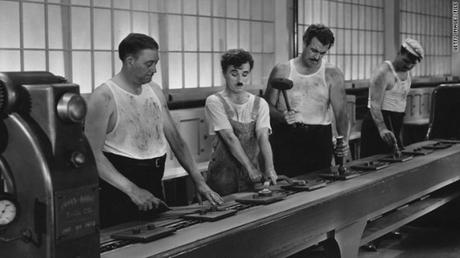
Modern Times: When the Great Depression ravaged the economy, the greedy and powerful realized the working class needed them more than they needed the working class. This set up an attitude where people were seen as cheap and expendable assets for the machine to consume. Chaplin sought to criticize this injustice and after a meeting with Gandhi he was inspired to make this film. The Tramp is a faceless drone working on an assembly line enduring no shortages of embarrassments and harassment at the hands of his boss. Naturally this work leads to him being hospitalized, but while recovering he is accused of being a Communist and jailed. In jail he meets a poor orphaned girl named Ellen who he helps escape and together they try to start a new life. While the film ends on a somber note, it does give hope that eventually a day will come when they will finally be free from a society run by greedy corporations.

The Great Dictator: In 1940, Chaplin finally caved to the talkie movement and the result is possibly the most powerful film of his career. This movie sees the actor/writer/director play dual roles, as an amnesiac Jewish barber and Adenoid Hynkel a megalomaniacal dictator who was an unabashed lampoon of Adolf Hitler. As Hynkel begins his rounding up of the Jews, the barber and his friend Schultz realize they have to escape from the ghetto they are confined to in order to save his love Hannah who's family is in the path of the dictator's army. Though once the barber dons a stolen uniform to escape he is mistaken for the tyrant and taken to a parade in his honor. At the parade the nervous man is expected to give a speech, and having never given a speech in his life he speaks from the heart to inspire the betterment of his fellow man. The climactic speech from Chaplin stands as arguably the greatest speech delivered in cinema history, and to this stay still invokes chills and tears. The Great Dictator was a smash hit with audiences, but their governments were none too happy with it's satirical take on Hitler as they still hoped appeasement would be the path to avoiding war.
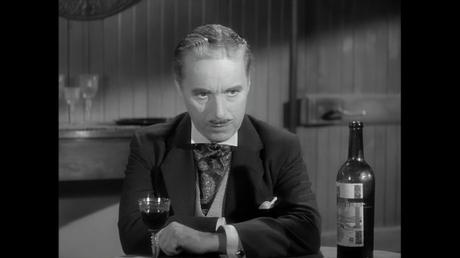
Monsieur Verdoux: Inspired by a conversation with Orson Welles, Chaplin crafted a dark comedy where the character he played was worlds away from his Little Tramp. After years of steady work, Henri Verdoux is laid off from his bank job and left with no income to care for his wife and child. He sees a morbid opportunity to fix his money troubles when he plots to marry lonely wealthy women and murder them. His plan hits two bumps when it comes to his scheming; a girl fresh from prison whom he forms a soft spot for and an intended target who just will not die. As expected his murderous business comes to an end when he is finally caught. Due to the sardonic tone of the film many in the immediate aftermath of World War II did not know how to feel about it, especially with it's ending anti-war message. While the film was shredded by American critics it did solid business at the box office and is remembered well by modern fans.
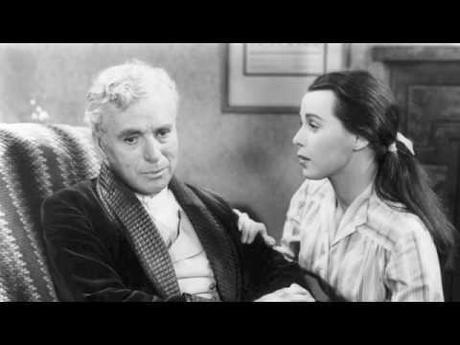
Limelight: The stage clown Calvero was once one of the most beloved performers in London, but that was a long time ago. Now he is a washed up drunk and a has-been. His fortunes change when he rescues a suicidal woman named Terry who has given up on her dreams of being a professional dancer. Using veteran experience and wisdom he becomes a mentor to the young woman. During this process Calvero's passion for performing is reignited and once Terry makes it big she helps her old friend find work once again. even featured a brilliant cameo role from another comedy legend from the silent era in Buster Keaton as Chaplin's old partner. Seeing these two icons share the screen is a treat for any cinephile.

A King in New York: 1957 saw Charlie Chaplin take on his final leading role in a film based on his own exile from the United States and takes this opportunity to lampoon American culture at the time. Deposed during the "minor annoyance" of a revolution in his home country and left without a penny to his name, King Igor Shahdov comes to New York in search of a better life. While in America the King is meets the young but incredibly bright Rupert. It is discovered that in this era of McCarthyism, the young man's parents have been jailed for not giving up the names of their friends in the Communist Party. Given he has been associating with Rupert, it is not long before Shadhov is forced to testify in front of the House Un-American Activities Committee as a suspected Communist. Though he is proven innocent, it does not stop him from making clowns of those running this witch hunt. In the end, he and his wife are reunited and Rupert is recognized by Shadhov as a true patriot. Understandably A King in New York was not given an American release, but it is now seen as one of his most important films.

